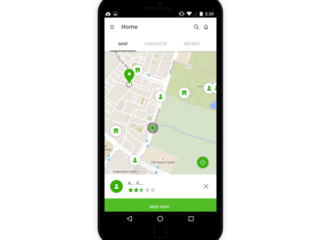01. Project Overview
TravelTriangle came with the requirements that many of the features launched were never explored by the agents. Secondly, the learning curve of their agents didn’t match with the system.
02. My Role
Defined the product scope with the stakeholders. Mapped the customer goals by prioritizing and aligning features with the business.
Created a strategy & vision for a scalable framework that mapped with users’ mental model, improved information architecture and interaction patterns to help users with their decision making.
Planned & collaborated with the designers, traveltriangle stakeholders, and the development team to produce product features for the platform.
Partnered with my design team to uncover insights and ideation into features to address customer behaviors & their motivations. The design process started with design research, persona generation, customer journey mapping, wireframes, prototypes, and design guidelines.
Planned and presented the milestones to the stakeholders throughout the project lifecycle to get insights and feedback.
03. Goal & Objectives
TravelTriangle is connecting platform of the travel industry with the travelers. Travel agents serve offerings to traveler’s, visiting the TravelTriangle.
The business objective was to shorten the time taken by the agents in complete process of giving travel plan until its final execution with the traveler so that many trips could easily be converted through the platform.
04. Understand the existing workflows
The basic process flow helped to understand how travelers, agents, and in-house operation teams interact with each other to get to know business model, process of TravelTriangle, their future ideas, current problem they were facing, their way to connect with the users (travelers and agents), design expectations and execution process.
05. Key Role
- Owner of the travel agency,
- Agents, Travelers,
- In-house Operation team and
- Account team.
06. Competitive Analysis
To understand what other competitors (direct and indirect) were offering and how? This helped us to find the direction of design for TravelTraingle.
07. The Discovery
Our objective was to understand the context of the each role through user research. The key area was to find out the eco-system between agents, travelers and operation team. How they interact and what were their pain points?
08. CONTEXT OF USE
Contextual inquiry with the travel agent to understand their current problem
Interview (10 users) of each group had been conducted for travellers, agents, in-house operation, and accounts team. We asked them open-ended questions and tell them to think aloud; to know their pain points, preferences, their workflows, suggestions, and inspirations.
It helped us to understand agents daily routine, how they maintain their daily records, how they were performing the task on the existing system, were they facing any difficulties with the system or not?
09. Agent Persona
Associators, their goal was to make an impact using print media, ad world etc. They were also planning for TV advt. and launching portal; to make their presence.
Highly motivated, their basic goal was to enrich the traveler’s experience by providing exclusive and customized tours throughout India.
Target Driven, they are happy with the current solutions.
10. The Structure Design
Mapping the interactions and touch-points helped us to design a better system for the agent’s daily routine.
11. Scenario Based Flow
After understanding the mental model of the agents, the scenario-based tasks flow had been defined by keeping all the features in mind.
12. TravelTriangle Ecosystem
The ecosystem of TravelTriangle is the interaction between traveler, agents, ops, and accounts. All process of each role was linked with another role, to get an overall experience of the system.
Business stakeholders and the designers sat together to select the final features of the new system.
13. Content Hierarchy
The information and content were designed to give a better context of use.
All possible features had been listed down with their specific fields.
The old design had every information at every stage; now it’s time to change as user study analysis says that every stage needed different priority of content.
14. Frame The Dream
Firstly, paper prototyping was developed to test with 2 -3 agents, then mid-fidelity axure clickable prototyping was made to test again with more agents.
One of the outcomes of UX research process showed that the travel agent’s always remembered each upcoming lead with its stages, and that’s how they connect with the travelers.
15. Testing Our Assumption
Usability testing had been done with some existing and new agents, ops and accounts team of the TravelTriangle. The user needed to perform a few tasks and requested for their feedback.
More iteration was done on the mid-fidelity as per user’s feedback and business decisions.
16. Look & Feel
After doing all the changes all wireframes converted to visuals. As per the TravelTriangle branding, the color schemes were inherited.
The main focus of the visual design was user could accomplish the task easily. To achieve this all major actions were designed promptly.
As the dashboard consists of too much text, visual hierarchy and iconography were very important to be introduced.













